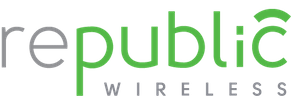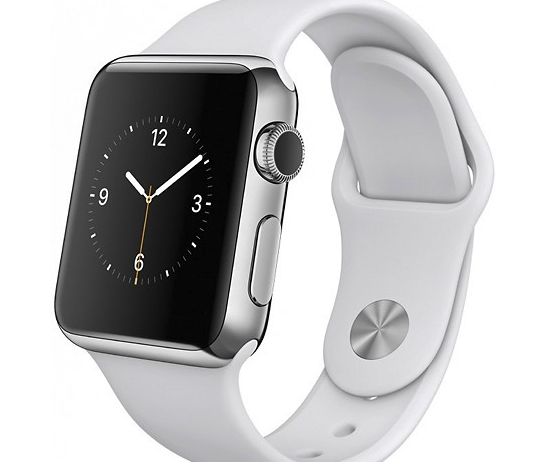When you buy a home, you’re in it for the long haul. You’ll have a mortgage payment for 15, 20 or 30 years, after all, so before you commit, it’s smart to shop around to find the best mortgage lenders out there. Pick the wrong company and you could overpay for your home loan, or wind up in financial trouble after going with the wrong product.
Finding a mortgage lender involves more than just looking for a good interest rate; you want to work with only the best mortgage companies, staffed by top professionals who will explain the ins and outs of the process.
Here are five tips to get started.
In this article
Get your credit score in shape
Know the lending landscape
Compare rates from several mortgage lenders
Ask the right questions
Read the fine print
1. Get your credit score in shape
You can negotiate and compare mortgages all you want, but your credit score still has the biggest impact on how good a deal you’ll get on your home loan. Not everyone can qualify to buy a home; you have to meet certain credit and income criteria to assure a lender you can repay your loan. The higher your credit score and the more on-time payments you make, the more negotiating power you’ll have with potential lenders.
A lower credit score will mean a higher interest rate on your home loan, which can make or break your ability to repay it. Generally, if you have a score under 580, you’ll have a tough time qualifying for most types of mortgages.
The first thing to do is make sure your credit reports are accurate and free of errors. Get your report from the three major credit bureaus — Equifax, Experian and TransUnion. Each is required to provide you with a free copy of your report once every 12 months.
Next, try to pay off high-interest debts, and lower your overall level of debt as quickly as possible. By lowering your debt, you’ll improve your debt-to-income ratio, which will boost your credit score.
With credit cards, for example, keep a lid on the amount of your available credit you use. This is known as your credit utilization rate and is a key factor in determining your credit score. If you have a total credit limit on your cards of $20,000 and outstanding balances totaling $5,000, your credit utilization rate is 25%. In general, the lower your credit utilization rate, the higher your score. A good rule of thumb is to keep it below 30%.
And if you pay off credit cards and recurring loans before you buy a home, you’ll free up more money for the down payment.
2. Know the lending landscape
Mortgage lending is complex, and it’s difficult to discern who the best mortgage lenders are in a crowded field. Here are the most common types of lenders you’ll choose from:
- Credit unions: These member-owned financial institutions often offer favorable interest rates to shareholders (members). And many have eased membership restrictions, so it’s likely you can find one to join.
- Mortgage bankers: They work for a specific financial institution and package loans for consideration by the bank’s underwriters.
- Correspondent lenders: Correspondent lenders are often local mortgage loan companies that have the resources to make your loan, but rely instead on a pipeline of other lenders, such as Wells Fargo and Chase, to whom they immediately sell your loan.
- Savings and loans: Once the bedrock of home lending, S&Ls are now a bit hard to find. But these smaller financial institutions are often very community-oriented and worth seeking out.
- Mutual savings banks: Another type of thrift institution, like a savings and loan, mutual savings banks are locally focused and often competitive.
You can (and should) check out each lender you consider on the Nationwide Multistate Licensing System & Registry to see whether they are registered in the state you’re buying your home. Also, search the Better Business Bureau for unbiased reviews and information.
3. Compare rates from several mortgage lenders
This is where some homework and a lot of patience come into play. As noted, there are all kinds of mortgage lenders — neighborhood banks, big commercial banks, credit unions, online mortgage lenders. You have more options than ever.
You can search for the best mortgage rates online to start. You could also enlist the help of a mortgage broker who does the shopping for you, which saves time and hassle. Keep in mind that the rate quote you see online is a starting point; a lender or broker will have to pull your credit information and process a loan application to provide an accurate rate, which you can then lock in if you’re satisfied with the product.
Once you have several quotes in hand, compare all the costs and decide which one makes the most financial sense for you. Use your research as leverage to negotiate for the best mortgage rates possible.
While there’s more to finding a good lender than picking the lowest-rate offering, that doesn’t mean that getting a low rate isn’t important. The total interest you pay on a mortgage over the life of the loan is a big figure, and a lower rate can save you thousands of dollars.
4. Ask the right questions
Picking the right lender or broker to work with can be tricky. Narrow your choices by asking for referrals from friends, family or your real estate agent, or by reading online reviews. Once you have some names, it’s time to ask each:
- How do you prefer to communicate with clients (email, text, phone calls, in person)?
- How quickly do you respond to messages?
- What lender fees will I be responsible for at closing (commission, loan origination, points, appraisal, credit report, application fees)?
- Will you waive any of these fees or roll them into my mortgage?
- What are the down payment requirements? Note: If you’re looking for low down-payment options, a loan backed by the Federal Housing Administration (FHA loan), Veterans Affairs (VA loan) or Department of Agriculture (USDA loan) might be your best bets.
- How long are your turnaround times on preapproval, appraisal and closing?
Also check with your mortgage lender or broker to see whether buying points to lower your rate makes sense. With this strategy, you’re basically paying some interest upfront in exchange for a lower interest rate on your mortgage. Generally, one point equals 1% of the loan amount. For example, on a $200,000 mortgage, 1 point would cost $2,000, and could lower your interest rate by 0.25%.
This could be a good cost-saving move if you plan on living in the home for a long time. “Even though you pay additional points upfront to do so, you can save thousands of dollars in interest expense over the life of your loan,” says James Dowd, a San Francisco-based financial advisor and accountant.
5. Read the fine print
Principal and interest payments on a mortgage aren’t the only costs of homeownership; you should also ask your lender about estimated closing costs, points, loan origination fees, transaction fees and any other costs. Ask what each fee includes. If you are unsure of something, ask the lender for an explanation.
Some mortgage lenders will require an “earnest money” deposit to start the loan process. However, be careful of contracts specifying that the earnest money will be kept regardless of whether the lender offers a loan or the loan closes, says Kevin Stophel, a financial planner and advisor in Chattanooga, Tennessee. Ask the lender to specify under what circumstances the earnest money will be kept, and if the answer is vague, keep shopping around.
Don’t forget to examine the fine print of your loan documents, particularly the initial Loan Estimate and the Closing Disclosure. These will tell you the exact finance terms, who pays closing costs, what items are and aren’t included in the home, whether there’s a home inspection contingency, the closing date and other important details.
More from NerdWallet
Compare online mortgage refinance lenders
Compare mortgage rates
Find a mortgage broker
Deborah Kearns is a staff writer at NerdWallet, a personal finance website. Email: dkearns@nerdwallet.com. Twitter: @debbie_kearns.
Steve Nicastro is a staff writer at NerdWallet, a personal finance website. Email: Steven.N@nerdwallet.com. Twitter: @StevenNicastro.
This article was updated May 27, 2016. It was originally published April 8, 2014.











 i II
i II Price: $299.95.
Price: $299.95. you’re an entrepreneur there’s really no telling when your next great idea will hit you. Additionally, while you may sometimes instantly know that you’re on to something, other times your idea needs developing and some honest feedback. Traditionally this is where the advice of friends and family has come has been relied upon but a new app is making it so business owners can solicit advance from a much larger crowd of unbiased voices.
you’re an entrepreneur there’s really no telling when your next great idea will hit you. Additionally, while you may sometimes instantly know that you’re on to something, other times your idea needs developing and some honest feedback. Traditionally this is where the advice of friends and family has come has been relied upon but a new app is making it so business owners can solicit advance from a much larger crowd of unbiased voices. However you choose to spend Memorial Day weekend, Best Buy is offering a special sale for you.
However you choose to spend Memorial Day weekend, Best Buy is offering a special sale for you. If you’re in the market for a Microsoft product, the computer and electronics retailer starts its
If you’re in the market for a Microsoft product, the computer and electronics retailer starts its 